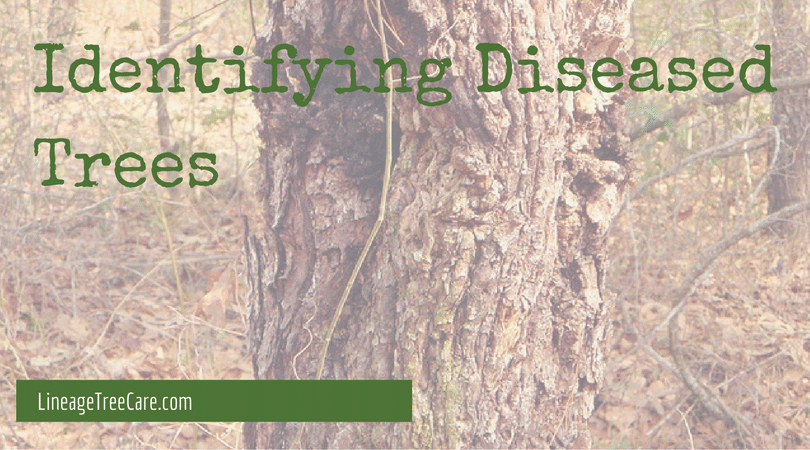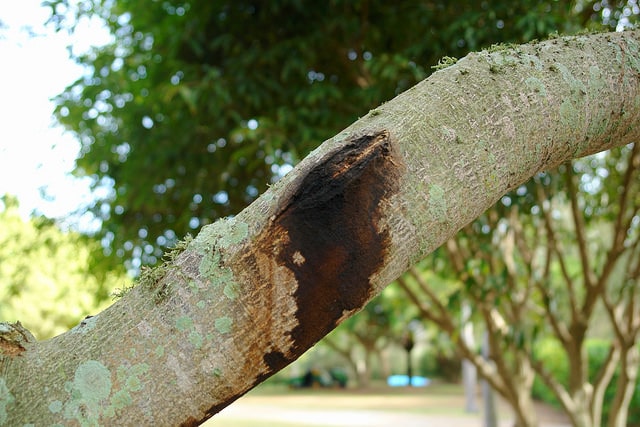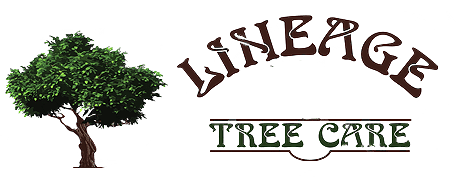
Determining whether or not you need to remove a dead or diseased tree is based on what you can identify in the tree, what type of tree it is, and if it’s a hazard to your property.
Here in the Pacific Northwest, we have hundreds of varieties of common and native trees. From fruit trees to tall cedars, hemlock, fir, aspen and even a few birch varieties, knowing what to look for when it comes to disease or damage can be important to either save the tree or remove it.
After a damaging event such as a storm or some other hazard, trees can take years to recover if they do at all. It’s important to handle irrigation, water, mulch and prune the trees regularly for their fitness and security. Here are some things to look for if you’re concerned about signs of problems.
Soil disturbance
If the soil around a tree gets disturbed as in construction work of some kind and if dirt has been piled up around the critical root zone, it’s important to get it back to the original level as quickly as possible. Roots will probably not receive the amount of moisture with too much dirt around the base. Visual signs will include small yellowing leaves, a variety of suckers along the main trunk or branches reaching out for water and dead twigs or branches.
[Read More: How do I Know if a Tree is Dead?]
Splits and cracks
Examine the tree trunk and branches for cracks. Splits and cracks leave the tree susceptible to disease and insects, which could cause the tree to die. Trees with multiple trunks or several branches attached to the same point on the trunk can be a higher risk for disease due to splits or cracks. V-shaped forks are more prone to break then an open U-shaped on a tree during storms. Inspect all the branches where the attached to the trunk.
Route to damage
If some construction or other work has created extensive damage to the root zone, you may have to cut them cleanly off with a handsaw if they cannot be recovered. A professional tree care service can make sure that the tree doesn’t have any stability issues as a result of cutting large roots. The last thing you want is for the whole thing to topple over because you’ve disconnected it from a grounding root system.
Trunk cavities
If the trunk or branches has peeling bark or hollow and decayed areas, this could indicate a major problem. 
Pests and disease
This is one of the most common things that can kill a tree. Things to look for include root decay, dead branches, off-colored leaves, a leaning trunk, cracked or mounted soil new the base of the tree, to mushrooms growing around the base, bark list area or sunburned or sunscald areas. The tree may or may not be able to be saved so it’s important to have a tree care professional inspect the tree for security concerns.
Wounds to the bark
Trees don’t really have a wound healing process. The tree seals off the damaged tissue rather than heals it. If the cells have been damaged too much, the tree could cut off valuable routes for water and nutrients. It honestly depends on how well the tree is at isolating the damage and continuing to grow around it. One of the most important things to do is not paint the wound. Have a professional tree care service examine the tree to see if it will become a hazard.
If you have questions as to the fitness and security of your tree or would like to schedule an appointment for us to come and take a look at the damage and fitness of your trees, give us a call at any time. We work throughout the King and Snohomish counties of Washington.

I have 4 trees all in a row dying?
It sounds like they all are connected and probably don’t have enough water, something is stealing their nutrients, or disease or pest. We can come out and take a look if you’d like? Shoot us an email or call: 425-289-8535 business@lineagetreecare.com